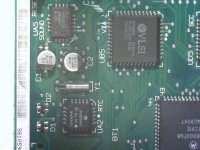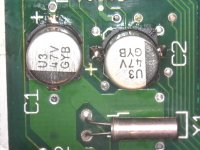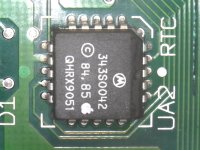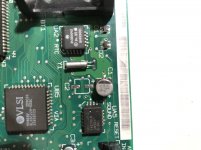Ok, so, yes...I reset the scope so it wasn't acting weird. When I hook the probe to the crystal leg when hooked to nothing but the battery, I get the constant 32 kHz wave. The instant I plug the wire harness from the analog board to the main board, I get a huge, fat, constant wave (extremely fast freq). Flipping the machine on drops the amplitude of that wave by a factor of about 4....but still nothing of any value. When I then shut it off and disconnect the cable, the wave dissipates over a few seconds back to 32 kHz. Does this mean that there is some aberrant current making the crystal vibrate tremendously, throwing off the timing circuitry? Just a total hunch since this is not my thing.
So I checked voltages between the legs of the crystal with the voltmeter. With just the battery, I get a fluctuating 0.2-0.6 volts that oscillates up and down (ticking of the clock, no doubt) which is what I would assume would happen. With the machine switched on, I get a steady 1.7 volts, in the opposite direction (negative) with no variation. I assume that should not be, and explains why the clock will not "tick." Having the Classic schematics would help greatly, but I can't find them.






